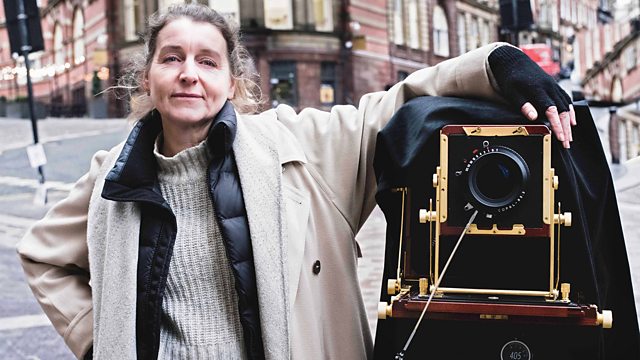Art That Made Us episode 7: Art goes to war during the first half of the 20th century: war with the old imperial order, war with convention and war with the very idea of what it means to be human. This is a story of artists grappling with the destruction, fighting back and transforming the culture of the Isles.
Actress Michelle Fairley performs WB Yeats’s poem Easter 1916, with its resonant phrase ‘a terrible beauty is born’ marking a turning of the tide against the British Empire. Contemporary war photographer Oliver Chanarin traces the story of William Orpen’s subversive protest image, To the Unknown British Soldier in France, picturing a lone draped coffin amid the magnificence of the Palace of Versailles, where peace delegates met in 1919.
Some artists rejected war with their bohemian lifestyles or their utopian visions of a better future for the people. Artist Lachlan Goudie explores the great interwar shipbuilding project, the Queen Mary ocean liner, with its fusion of Glaswegian engineering and art deco luxury.
As refugees flee Germany in the 1930s ahead of a new war, comedian Eddie Izzard appreciates the radical modernist vision of the De La Warr Pavilion, Bexhill, designed by German and Russian Jewish émigrés, and photographer Hannah Starkey reflects on the outsider’s point of view photographer Bill Brandt brought to his images of 1930s poverty, including the seminal Coal-Searcher Going Home to Jarrow.
With the Second World War bringing new horrors, artists grappled with Nazi atrocities. Film director Andrew MacDonald explores the controversy sparked by The Life and Death of Colonel Blimp, a highly original take on the British war effort written and produced by his grandfather Emeric Pressburger. Artist Ryan Gander examines how sculptor Barbara Hepworth tried to make sense of war by reaching for beauty in abstract human forms, and Denzil Forrester looks ahead to the postcolonial aftermath of war, signalled by Indian artist FN Souza’s suffering black Christ in his 1959 painting Crucifixion.
Art That Made Us episode 7
William Butler Yeats was an Irish poet, dramatist, writer and one of the foremost figures of 20th-century literature. He was a driving force behind the Irish Literary Revival and became a pillar of the Irish literary establishment who helped to found the Abbey Theatre. In his later years he served two terms as a Senator of the Irish Free State.
A Protestant of Anglo-Irish descent, Yeats was born in Sandymount and was educated in Dublin and London and spent childhood holidays in County Sligo. He studied poetry from an early age, when he became fascinated by Irish legends and the occult. These topics feature in the first phase of his work, lasting roughly from his student days at the Metropolitan School of Art in Dublin until the turn of the 20th century. His earliest volume of verse was published in 1889, and its slow-paced and lyrical poems display debts to Edmund Spenser, Percy Bysshe Shelley and the poets of the Pre-Raphaelite Brotherhood.
From 1900 his poetry grew more physical, realistic and politicised. He moved away from the transcendental beliefs of his youth, though he remained preoccupied with some elements including cyclical theories of life. He had become the chief playwright for the Irish Literary Theatre in 1894, and early on promoted younger poets such as Ezra Pound. Yeats was awarded the Nobel Prize in Literature in 1923. His major later works include 1928’s The Tower and Words for Music Perhaps and Other Poems, published in 1932.




